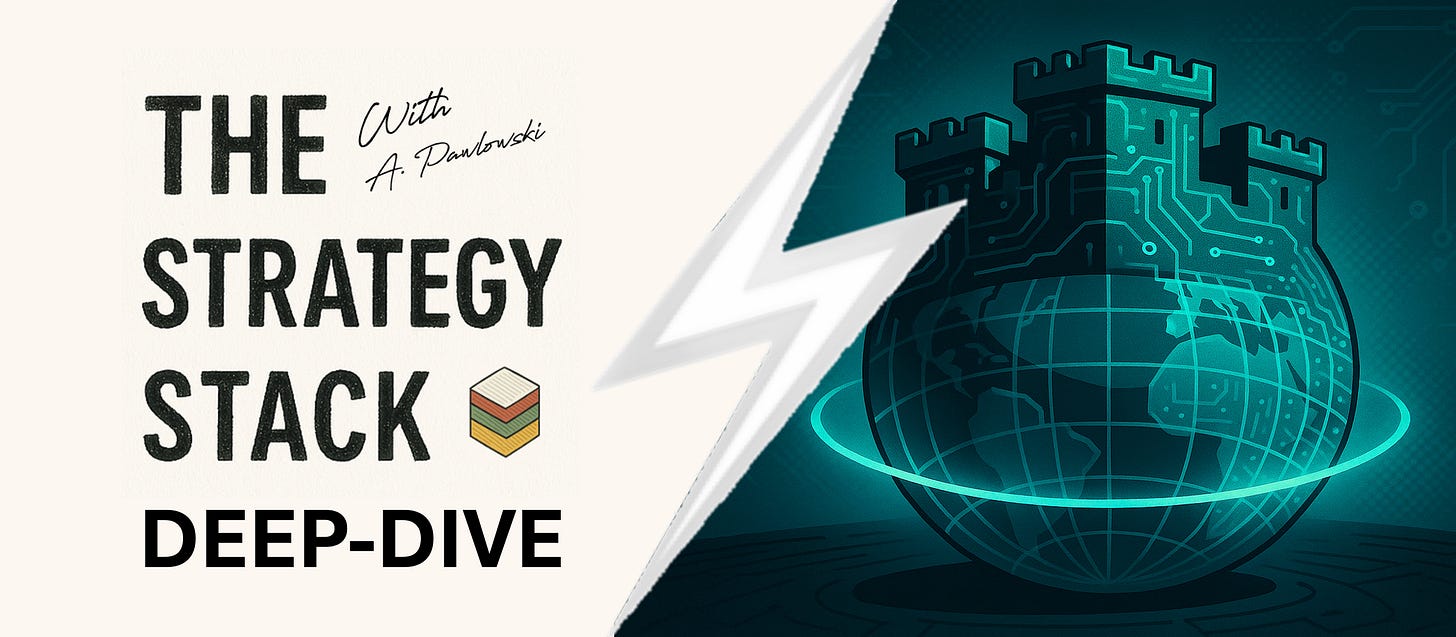How Did We Go from Owning Everything to Orchestrating Anything?
#89: 1.2 — How Did We Shift from Industrial Logic to Digital Economies?
Business models don’t evolve in a vacuum — they evolve with the logic of their era.
From the factories of the industrial age to cloud-native AI ecosystems, each technological wave has redefined how we create and capture value. What we’re witnessing now is not just a new business model, but a new operating logic — one that fuses digital transformation, AI strategy, and ecosystem orchestration into a single adaptive framework.
From Industrial Logic to Digital Strategy
Throughout history, business model evolution has followed the dominant sources of leverage:
Asset-Heavy Models (Industrial Era): Control meant ownership — of factories, fleets, and infrastructure.
Asset-Light Models (Digital Era): Advantage shifted to owning demand, brand, and data.
Asset-Optional Models (AI-Driven Era): Power now comes from orchestrating ecosystems, APIs, and networks — not owning them.
This marks a fundamental pivot from control to coordination — the essence of digital strategy in 2025.
TL;DR — From Ownership to Orchestration: The Evolution of Business Models
Business models evolve through three historical phases:
Asset-Heavy (1900–1980s): Firms owned their entire value chain—factories, fleets, and retail networks.
Asset-Light (1990s–2010s): Competitive edge came from owning demand and brand, while outsourcing production.
Asset-Optional (2015–Present): Companies dynamically own, rent, or orchestrate assets through ecosystems, APIs, and partnerships.
Today’s leaders like Amazon, Airbnb, and Tesla combine all three approaches, strategically choosing when to own vs. orchestrate.
Modern ecosystems are recursive systems, where data loops continuously inform product design, distribution, and monetization in real time.
Key shift:
Yesterday’s moat: Physical asset ownership.
Today’s moat: Ecosystem orchestration.
Tomorrow’s moat: Adaptive, intelligence-driven systems that scale through data, AI, and embedded networks.
Table of Contents
Introduction: From Industrial Logic to Digital Economies
Phase 1: Asset-Heavy — Owning the Whole Value Chain
Definition & Characteristics
Advantages & Drawbacks
Classic Examples: Ford, AT&T, Coca-Cola
Phase 2: Asset-Light — Owning Demand, Not Supply
Definition & Characteristics
Advantages & Drawbacks
Examples: Nike, Apple, Booking.com
Phase 3: Asset-Optional — Orchestrating Ecosystems
Definition & Characteristics
Advantages & Drawbacks
Examples: Airbnb, Amazon, Tesla
From Linear Chains to Recursive Systems
Heatmap: Mapping Phases to Modern Business Model Layers
Asset-Heavy → Infrastructure dominance
Asset-Light → Distribution & Monetization
Asset-Optional → Intelligence & adaptive orchestration
Strategic Questions for Leaders
Key Takeaway: The Future of Competitive Moats
Phase 1: Asset-Heavy — Owning the Whole Value Chain
Era: ~1900–1980s
Logic: The industrial age defined scale through ownership.
Definition
In an asset-heavy model, firms controlled every layer of production and distribution — from steel mills to storefronts. Value was physical, not digital.
Advantages
Full control over supply chain and product quality
Tangible entry barriers through capital and scale
Drawbacks
High fixed costs
Low adaptability to demand shifts
Real-World Examples
Ford Motor Company: Vertical integration from steel to dealerships.
AT&T: Monopolized physical phone lines and equipment.
Coca-Cola: Early bottling networks were company-owned before franchising took hold.
Strategic Insight
This model optimized for stability, not agility — the inverse of today’s adaptive business models.
Phase 2: Asset-Light — Owning Demand, Not Supply
Era: ~1990s–2010s
Logic: The digital revolution made distribution and brand the true moats.
Definition
The asset-light model kept intellectual property and customer relationships in-house while outsourcing production and logistics.
Advantages
Fast scalability without proportional cost
Global reach through partnerships and platforms
Drawbacks
Reliance on third-party execution
Reduced control over customer experience
Real-World Examples
Nike: Owns brand and design, not factories.
Apple: Mastered product experience while outsourcing manufacturing.
Booking.com: Dominates travel without owning hotels.
Strategic Insight
This was the first digital inflection — a platform strategy where value accrued to those who controlled demand, not supply.
Keep reading with a 7-day free trial
Subscribe to The Strategy Stack to keep reading this post and get 7 days of free access to the full post archives.




